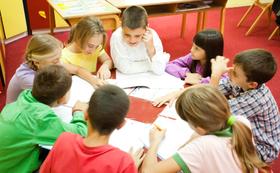Kathleen MacDonald High School is a comprehensive, coeducational public high school in San Jose, California, United States. It is one of five high schools in the Santa Clara Unified School District. MacDonald is accredited by the Western Association of Schools and Colleges through the 2025–2026 school year.
Kathleen Macdonald High School serves 434 students in grades 9-12.
The student-teacher ratio of 18:1 is lower than the California state level of 21:1.
Minority enrollment is 87% of the student body (majority Hispanic), which is higher than the California state average of 80% (majority Hispanic).
Quick Facts (2025-26)
- Grades: 9-12
- Enrollment: 434 students
- Student-Teacher Ratio: 18:1
- Minority Enrollment: 87%
- Source: National Center for Education Statistics (NCES), CA Dept. of Education
Top Rankings
Kathleen Macdonald High School ranks among the top 20% of public schools in California for:
Category
Attribute
Diversity
Community Size
Student Attention
School Overview
Kathleen Macdonald High School's student population of 434 students has grown by 107% over five school years.
The teacher population of 24 teachers has grown by 71% over five school years.
Grades Offered
Grades 9-12
Total Students
434 students
Gender %
Total Classroom Teachers
24 teachers
Year Founded
2022
Colors
Green, Navy Blue
School Rankings
The diversity score of Kathleen Macdonald High School is 0.67, which is more than the diversity score at state average of 0.63. The school's diversity has stayed relatively flat over five school years.
Student-Teacher Ratio
18:1
21:1
American Indian
n/a
1%
Asian
31%
12%
Hispanic
47%
56%
Black
2%
5%
White
13%
20%
Hawaiian
1%
n/a
Two or more races
6%
6%
All Ethnic Groups
Eligible for Free Lunch
35%
54%
Eligible for Reduced Lunch
3%
8%
School Statewide Testing
School District Name
Source: National Center for Education Statistics (NCES), CA Dept. of Education
Profile last updated: 02/09/2025
Frequently Asked Questions
How many students attend Kathleen Macdonald High School?
434 students attend Kathleen Macdonald High School.
What is the racial composition of the student body?
47% of Kathleen Macdonald High School students are Hispanic, 31% of students are Asian, 13% of students are White, 6% of students are Two or more races, 2% of students are Black, and 1% of students are Hawaiian.
What is the student-teacher ratio of Kathleen Macdonald High School?
Kathleen Macdonald High School has a student ration of 18:1, which is lower than the California state average of 21:1.
What grades does Kathleen Macdonald High School offer ?
Kathleen Macdonald High School offers enrollment in grades 9-12
What school district is Kathleen Macdonald High School part of?
Kathleen Macdonald High School is part of Santa Clara Unified School District.
In what neighborhood is Kathleen Macdonald High School located?
Kathleen Macdonald High School is located in the Coyote Creek North neighborhood of San Jose, CA. There are 2 other public schools located in Coyote Creek North.
School Reviews
Review Kathleen Macdonald High School. Reviews should be a few sentences in length. Please include any comments on:
- Quality of academic programs, teachers, and facilities
- Availability of music, art, sports and other extracurricular activities
Recent Articles

Public School Open House & Enrollment Season Guide
A parent-focused guide to the public school open house and enrollment season, with expert questions, timelines, and decision tips.

School Supply Budget 2026: Fees, Books, Tech Costs
School Supply Budget 2026 guide for parents, covering fees, textbooks, technology, and hidden extras to plan ahead.

Education Funding in America (2025 Update)
Comprehensive 2025 update on public school funding in America, new federal and state policies, per-pupil spending, and equity challenges.





